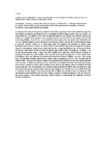Use este identificador para citar ou linkar para este item:
http://www.alice.cnptia.embrapa.br/alice/handle/doc/945716Registro completo de metadados
| Campo DC | Valor | Idioma |
|---|---|---|
| dc.contributor.author | VEDOVATO, L. B. | pt_BR |
| dc.contributor.author | VICENTE, L. E. | pt_BR |
| dc.contributor.author | PIQUEIRA, J. R. C. | pt_BR |
| dc.contributor.author | LOEBMANN, D. G. dos S. W. | pt_BR |
| dc.contributor.author | MATTOS, S. H. V. L. | pt_BR |
| dc.date.accessioned | 2013-01-18T11:11:11Z | pt_BR |
| dc.date.available | 2013-01-18T11:11:11Z | pt_BR |
| dc.date.created | 2013-01-18 | pt_BR |
| dc.date.issued | 2012 | pt_BR |
| dc.identifier.citation | In: CONGRESSO BRASILEIRO DE ECOLOGIA DE PAISAGENS, 2.; SIMPÓSIO SCGIS-BR, 2., 2012, Salvador, BA. Anais... Salvador, BA: IALE-BR, 2012. | pt_BR |
| dc.identifier.uri | http://www.alice.cnptia.embrapa.br/alice/handle/doc/945716 | pt_BR |
| dc.description | We analysed the spatial heterogeneity complexity of Cerrado vegetation of São Paulo. Spatial heterogeneity was obtained by quantity texture patterns on ASTER images for Jataí Ecological Station (JES; Luiz Antônio ‐ SP) conservation unit. Two hillsides of JES where cerradão physiognomy was present were analyzed, and for each of them we sampled three positions: base, medium and top. Vertical structure and canopy cover density varied along hillsides. For each site, we extracted the texture pattern for two spatial scales (150x150m and 75x75m). Spatial complexity were estimated by two landscape metrics, both based on informational entropy: a) maximum entropy (H/Hmax), in which high values of complexity are assigned to patterns more disordered; and b) convex function of entropy (LMC), which attribute high values of complexity to patterns situated in intermediate range between order and disorder. Comparing different sites of the same hillside, both metrics had identical results in relation to greatest and smallest values of complexity. In hillside 1, the top side showed greater values. In these area, the cerradão shows high trees with less density of canopy in comparison to others sites of this hillside, which provides more spatial heterogeneity. For the smaller values of complexity, there was difference in comparison of analyzed extensions in hillside 1: for 150 x 150m spatial scale, was attributed medium hillside site to smaller values of complexity; for 75 x 75m, the base had the smallest values. However, the value of complexity of medium and low hillsides for the same spatial extension were very close. In hillside 2, on the base of site, which shows a cerradão with shorter trees and lesser canopy cover density in relation to others sites of hillside, texture patterns had highest values of complexity for both entropy measures. The most homogeneity site, located in medium position of hillside and with presence of high trees and canopy density, smallest values were recorded. Based on our findings we can concluded that there is a tendency of sites situated in the top and in the base of hillside showed great values of complexity, while sites located in medium hillside tend to be less complex in terms of spatial heterogeneity. Also, for local scale, the canopy density is more relevant than tree vertical structure on determining the complexity of texture patterns of vegetation. | pt_BR |
| dc.language.iso | por | pt_BR |
| dc.rights | openAccess | pt_BR |
| dc.subject | Cerrado vegetation | pt_BR |
| dc.title | Landscape complexity analysis based on texture patterns and satellite image for a São Paulo's Cerrado site. | pt_BR |
| dc.type | Resumo em anais e proceedings | pt_BR |
| dc.date.updated | 2013-01-23T11:11:11Z | pt_BR |
| dc.format.extent2 | 1 p. | pt_BR |
| riaa.ainfo.id | 945716 | pt_BR |
| riaa.ainfo.lastupdate | 2013-01-23 | pt_BR |
| dc.contributor.institution | LAURA B. VEDOVATO, BOLSISTA CPNM; LUIZ EDUARDO VICENTE, CNPM; J. R. C. PIQUEIRA, POLI/USP; DANIEL GOMES DOS SANTOS W LOEBMANN, CNPM; S. H. V. L. MATTOS, IG/UNICAMP. | pt_BR |
| Aparece nas coleções: | Resumo em anais de congresso (CNPM)  | |
Arquivos associados a este item:
| Arquivo | Descrição | Tamanho | Formato | |
|---|---|---|---|---|
| Vicente.pdf | 100,4 kB | Adobe PDF |  Visualizar/Abrir |









